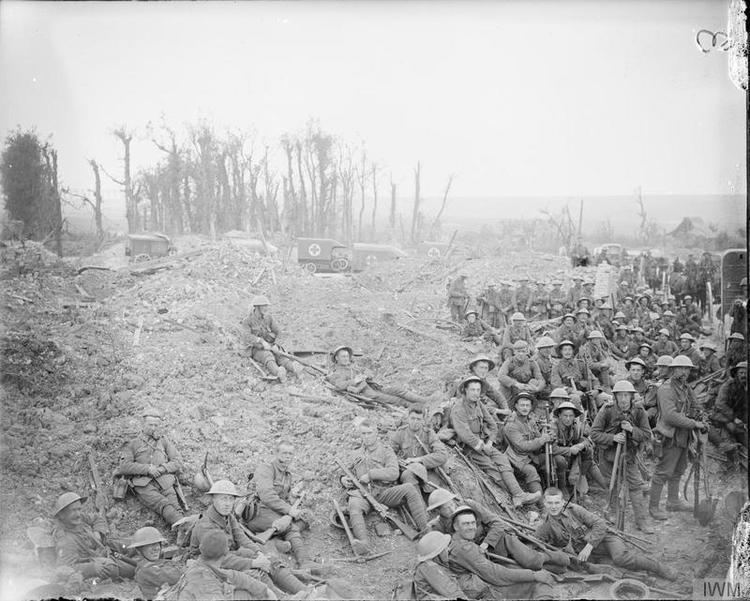Active 1915–1919 | Type Infantry | |
 | ||
Engagements | ||
The 41st Division was an infantry division of the British Army, raised during World War I as part of Lord Kitchener's New Armies. The division saw service on the Western Front and later on the Italian Front.
Contents
Unit history
The division was formed as part of the fifth wave (K5) of divisions in the New Army; it did not have a regional title, but was composed primarily of recruits from the south of England. Several of its battalions had been raised by local communities and were named for their towns or industries. After training and home service, the 41st Division, commanded by Major-General Sydney Lawford, deployed overseas to reinforce the British Expeditionary Force (BEF) on the Western Front in the first week of May 1916; its first major combat came in September of that year, at the Battle of Flers–Courcelette, part of the larger Battle of the Somme. After fighting in 1917 at the Battle of Messines and the Battle of Passchendaele (also known as the Third Battle of Ypres) it was transferred to the Italian Front to become part of the Italian Expeditionary Force (IEF). It remained here for three months throughout the winter of 1917–18 before returning to the Western Front, where it arrived just before the German Army launched its Spring Offensive in March. It participated in the Allied "Hundred Days Offensive" and ended the war in Flanders, from where it moved to join the Army of Occupation in Germany, following the Armistice of 11 November 1918. The 41st Division was commanded by Major-General Sydney Lawford throughout its existence and was demobilised in March 1919, with some units transferred to the 47th (1/2nd London) Division, British Army of the Rhine (BAOR). The division was not reformed after the war and did not serve in the Second World War.
Order of battle
The 41st Division was constituted as follows during the war:
122nd Brigade
123rd Brigade
124th Brigade
Pioneers
